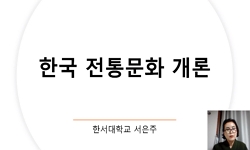As one of the most important of the four treasures of the study (wenfang sibao 文房四寶), the inkstone is not just a writing instrument or a folkcraft article. It is a rich repository of moral culture which has the spirit of ancient scholars and l...
http://chineseinput.net/에서 pinyin(병음)방식으로 중국어를 변환할 수 있습니다.
변환된 중국어를 복사하여 사용하시면 됩니다.
- 中文 을 입력하시려면 zhongwen을 입력하시고 space를누르시면됩니다.
- 北京 을 입력하시려면 beijing을 입력하시고 space를 누르시면 됩니다.
부가정보
다국어 초록 (Multilingual Abstract)
As one of the most important of the four treasures of the study (wenfang sibao 文房四寶), the inkstone is not just a writing instrument or a folkcraft article. It is a rich repository of moral culture which has the spirit of ancient scholars and literary men. The importance of the inkstone is arguably even greater in our current moment, as many people have recently cried out for the revival of Confucian ideas and traditional culture. This paper tries to discuss the cultural value of the inkstone, which retains both literary value and the spirit of literati-scholars. So this paper researches Chinese and Korean ancient literature concerning the inkstone and the relationships between the inkstone and ancient literary figures. The first section of this essay discusses some famous ancient works of Chinese and Korean literature concerning the inkstone, such as yanming 硯銘, ge歌, fu賦, zan 贊, song 頌 etc., focusing on the admiration expressed in these texts for inkstones and introducing the self-reflection of writers. The second section of this essay discusses the attitudes of ancient literary figures about the inkstone and focuses on the special relationships between the inkstone and ancient literary figures. This section focuses especially on documenting the Confucian spirit of ancient literary figures from their attitudes to inkstones. The love of these ancient literary figures for their inkstones was almost incomprehensible to the modern mind. Not only did they honor the the virtue of their inkstones, they wanted to enjoy an eternal friendship with these objects, even going so far as to frequently swear to be real life partners of their inkstones. Their care for these objects was so great they would often write “Yi yan ming” 瘞硯銘 and bury them when they were broken or rendered useless. What is more important, they did not simply praise the virtue and achievement of their inkstones, they sought to learn from them, a practice which they believed contributed to the development of their characters and training of their spirits.
다국어 초록 (Multilingual Abstract)
硯台不只是一般的民俗品或工藝美術品,更不是古代人使用的書寫用具而已。它是過去文人借以創造精神文化的寶貴文物,因此,我們從中可以找出過去文人藝術家以及仁人志士的文學、哲...
硯台不只是一般的民俗品或工藝美術品,更不是古代人使用的書寫用具而已。它是過去文人借以創造精神文化的寶貴文物,因此,我們從中可以找出過去文人藝術家以及仁人志士的文學、哲學以及人生態度等精神面貌。古人所留歌詠頌讚硯台的文章,也充滿着難能可貴的人文精神。最近我們特別强調儒敎文化的現代反思與儒生情操,那麽,以硯台爲首的文房用具的價値和意義是不可忽視的。本文基於這種觀點,探討硯台的價値中最重要的文化價値,逐步論述硯台的文學價値與儒生情操。至於文學價値,從硯銘到硯詩,有關硯台詩文的特點,都爲讚美硯台的德操。至於儒生情操,最重要的是,文人儒士不但讚美、推崇硯台之德,他們還身體力行地效法硯台所具有的美德,以此陶冶性情、涵養儒生情操。
참고문헌 (Reference)
1 최병규, "장르별로 살펴 본 중국문학 속의 벼루에 관한 고찰" 인문학연구원 (48) : 137-170, 2014
2 최병규, "안동의 벼루" 영남문화연구원 (15) : 433-456, 2009
3 柳奇玉, "벼루 소재 銘에 受容된 儒家的 處世의 指標와 意味" 한국언어문학회 (52) : 221-247, 2004
4 楊伯峻, "論語譯注" 中文出版社 1997
5 邱鑒波, "硯明正身-古硯辨識與鑑賞" 上海大學出版社 2011
6 權度洪, "硯台" 大院社 1989
7 楊白水, "硯" 中國華僑出版社 2008
8 유기옥, "漢詩文에 受容된 벼루의 樣相과 意味" 어문연구학회 43 : 393-418, 2003
9 胡旭, "漢末建安時期文學觀念的嬗變" (6) : 2006
10 黃玹, "梅泉集"
1 최병규, "장르별로 살펴 본 중국문학 속의 벼루에 관한 고찰" 인문학연구원 (48) : 137-170, 2014
2 최병규, "안동의 벼루" 영남문화연구원 (15) : 433-456, 2009
3 柳奇玉, "벼루 소재 銘에 受容된 儒家的 處世의 指標와 意味" 한국언어문학회 (52) : 221-247, 2004
4 楊伯峻, "論語譯注" 中文出版社 1997
5 邱鑒波, "硯明正身-古硯辨識與鑑賞" 上海大學出版社 2011
6 權度洪, "硯台" 大院社 1989
7 楊白水, "硯" 中國華僑出版社 2008
8 유기옥, "漢詩文에 受容된 벼루의 樣相과 意味" 어문연구학회 43 : 393-418, 2003
9 胡旭, "漢末建安時期文學觀念的嬗變" (6) : 2006
10 黃玹, "梅泉集"
11 李任順, "朝鮮時代 벼루에 나타난 紋樣의 造形的 分析" 숙명여자대학교 대학원 1976
12 姜漢樁, "唐摭言" 三民書局 2005
13 吳戰壘, "古硯" 福建美術出版社 2002
14 歐淸煜, "中華硯學通鑑" 浙江大學出版社 2010
동일학술지(권/호) 다른 논문
-
Li Zhi’s Religious Syncretism, or Sanjiao heyi 三教合一
- 성균관대학교 유교문화연구소
- 김학재
- 2016
- KCI등재,SCOPUS
-
The Jesuits’Latin Translations of the Zhongyong 中庸 during the 17th and 18th Centuries
- 성균관대학교 유교문화연구소
- 羅瑩
- 2016
- KCI등재,SCOPUS
-
Time: A Unique Perspective on the Relationship between Heaven and Humanity in Confucianism
- 성균관대학교 유교문화연구소
- 賈禎禎
- 2016
- KCI등재,SCOPUS
-
Philosophizing Jigi 至氣 of Donghak 東學 as an Experienced Ultimate Reality
- 성균관대학교 유교문화연구소
- 박소정
- 2016
- KCI등재,SCOPUS
분석정보
인용정보 인용지수 설명보기
학술지 이력
| 연월일 | 이력구분 | 이력상세 | 등재구분 |
|---|---|---|---|
| 2027 | 평가예정 | 재인증평가 신청대상 (재인증) | |
| 2021-01-01 | 평가 | 등재학술지 유지 (재인증) |  |
| 2018-12-20 | 학술지명변경 | 한글명 : 國際版<儒敎文化硏究> -> Journal of Confucian Philosophy and Culture외국어명 : 미등록 -> Journal of Confucian Philosophy and Culture |  |
| 2018-01-01 | 평가 | 등재학술지 유지 (등재유지) |  |
| 2015-01-01 | 평가 | 등재학술지 유지 (등재유지) |  |
| 2011-06-13 | 학회명변경 | 영문명 : Institute of Confucian Cultural Studies -> Institute of Confucian Philosophy and Culture |  |
| 2011-01-01 | 평가 | 등재학술지 선정 (등재후보2차) |  |
| 2010-01-01 | 평가 | 등재후보 1차 PASS (등재후보1차) |  |
| 2008-01-01 | 평가 | 등재후보학술지 선정 (신규평가) |  |
학술지 인용정보
| 기준연도 | WOS-KCI 통합IF(2년) | KCIF(2년) | KCIF(3년) |
|---|---|---|---|
| 2016 | 0.1 | 0.1 | 0.08 |
| KCIF(4년) | KCIF(5년) | 중심성지수(3년) | 즉시성지수 |
| 0.06 | 0.04 | 0.351 | 0.1 |






 KCI
KCI







